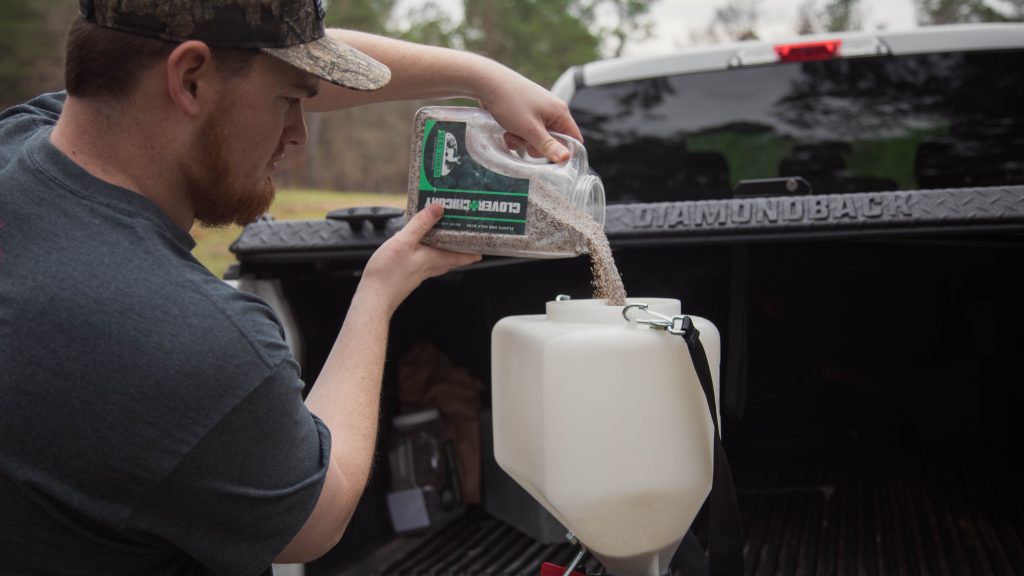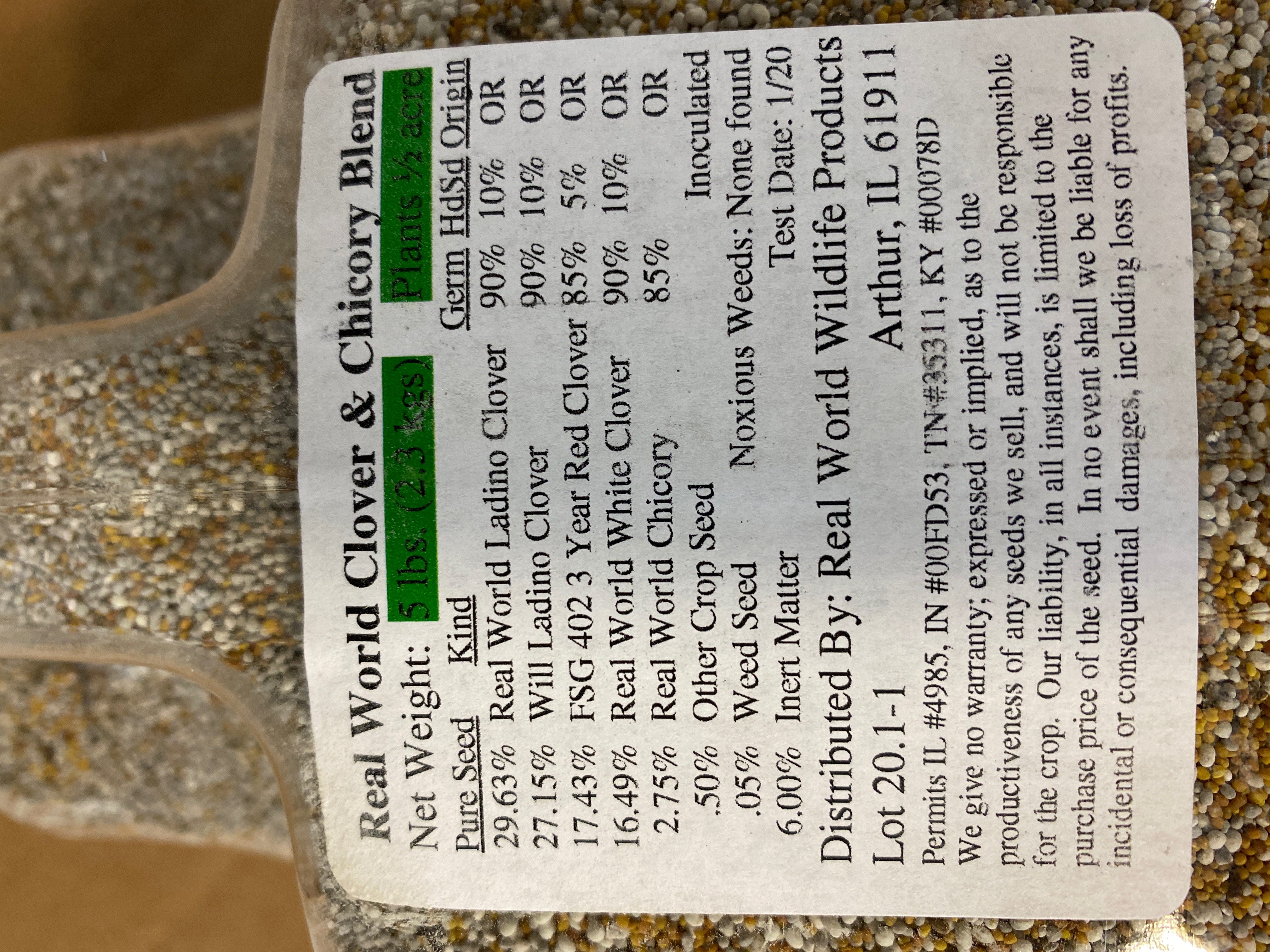
Real World Wildlife Products is proud of the fact that we started and built this company using education as a marketing tool. When a consumer is educated about what to look for in a particular product they can quickly and easily pick out a quality product from one that is simply in a fancy package or promoted with a slick advertising campaign.
One of our first education projects more than a decade ago was teaching food-plotters to read a seed analysis tag. These tags are required by law and are the consumer’s window to see clearly what is in each seed bag or container. While this video below has been around a long time and we have continued to improve our Clover / Chicory Blend, the information is 100% true!
One of the items noted on a seed tag is “seed coating” which is sometimes listed as “inert matter”. So let’s discuss seed coating to learn more about it and see just what a seed consumer should be looking for when purchasing a seed product.
Let’s be very clear from the start that seed coating is a good thing. A very basic definition of seed coating is a material applied to the outside of a seed to improve germination rates and plant establishment. We could get deeper into the science of different seed coatings but this basic definition covers everything a food-plotter really needs to know.
So if seed coating is a “good thing” why should food plotters be overly concerned, either a seed is coated or it isn’t … right? Well, not quite. Seed coating actually costs less than actual seed so some companies have padded their profit margins by putting more seed coating than is needed on their seeds. In fact some companies are actually putting as much coating in their bags as seed. Their analysis labels clearly show this and lists seed coating at 50% of the weight in the bag. This means that if you buy a 8# bag of clover seed to plant 1 acre and that bag lists 50% seed coating, you are really only getting 4# of seed!
So what is the “right” amount of coating that a consumer should look for? Research at Purdue University showed that coated seed produced an increase in germination rates and seedling survival of 12% versus uncoated seed from the same lot. So using this figure one can conclude that anything more than 12% seed coating (by weight) is not only non-beneficial but it will actually decrease the number of healthy plants one would expect to get from a pound of seed. For example let’s say 30% of a products weight is seed coating material and 70% is actually seed; the coating will result in an increase of 12% germination/live plants from that 70% seed; if instead of 30% seed coating that same product simply contained 30% more seed (no coating at all) it would actually result in more live plants than the coated seed.
The bottom line is very simple; seed coating is a good thing but more is not better. When you purchase seed products look closely at the analysis label and learn to read and understand everything it contains. If the product contains more than 12% seed coating you are likely paying for extra material that is much less expensive than seed itself and what you gain from buying coated seed will actually be lost because there is less seed in the bag.

Real World Wildlife Products remains dedicated to educating food-plotters to help them become more successful. When we started educating consumers on reading seed analysis labels 12 years ago no other company in the food-plot seed business was doing this. A number of smaller start-up seed companies have now followed Real Worlds lead.